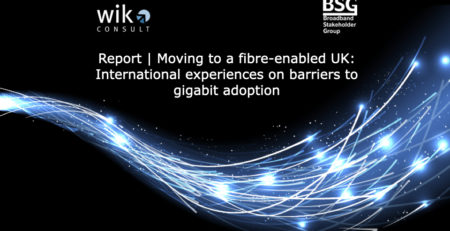BSG publishes costs of deploying fibre based superfast broadband
The Broadband Stakeholder Group (BSG) – the government’s advisory group on broadband – will today publish a report on the costs of deploying fibre based next generation broadband in the UK.
The report, produced by Analysys Mason for the BSG, sets out the costs of the various technology options in detail and explains how those costs mount up as fibre is pushed out across the country. It suggests that rolling out fibre nationwide would cost between £5.1bn and £28.8bn (depending on the technology used) and that the costs of deploying in rural areas will far exceed the costs in urban areas.
“This is the most comprehensive analysis produced to date on the costs of deploying fibre in the UK???, said Antony Walker Chief Executive of the BSG. “The scale of the costs looks daunting but the report does shed light on how some of these costs can be reduced and what the likely extent of commercial rollout will be. It should focus minds of commercial players, policy makers and regulators on the potential solutions to these challenges.???
The model demonstrates that national deployment of fibre to the cabinet (the cheapest technology option) would cost £5.1bn – this is three or four times more than the telecoms sector spent deploying today’s broadband services. Taking fibre to every UK home (using point to point fibre – the most expensive technology option) would cost as much as £28.8 bn.
The largest single cost component is the civil infrastructure (the cost of deploying and installing the fibre in new or existing ducts). The report suggests that these high civil infrastructure costs could be significantly reduced by the re-use of existing telecommunications ducts; the sharing of alternative infrastructure owned by other utilities, such as water companies; and the use of overhead fibre distribution in some areas.
The report also suggests that deployment costs will be relatively constant across higher density areas. This implies that, if a commercial case for deployment exists, the market should be able to deliver to approximately two thirds of the UK population. However, the costs of deploying in more sparsely populated areas will be significantly higher, making the commercial deployment to the last third of UK households much more difficult. “If rural areas are to be served in a reasonable time frame, thinking needs to start now about creative solutions for making them more attractive to investment???, said Walker.
The BSG’s earlier research on public sector interventions showed that there are many models for how this can be done that stop far short of large-scale subsidy, but do require the private sector to work closely with public bodies and local communities. In particular, demand stimulation initiatives, such as pre-registration schemes, localised to the level of individual streets or cabinets could prove highly effective in extending the reach of these networks.
Each technology has a high proportion of fixed costs that are incurred regardless of how many users take the service. This means that the cost per home connected (and therefore the commercial viability of the service) is highly dependent on the level of take-up. “If operators could achieve a higher than expected level of take-up in rural areas, then the business case for deployment in those areas could improve significantly???, said Walker.
“The magnitude of the costs, and how the costs differ between urban and rural areas, will be important for operators, media players and public sector organisations looking to develop their future broadband strategies” said Matt Yardley, Partner at Analysys Mason, who directed the work.
BSG Report – The costs of deploying fibre-based next-generation broadband infrastructure
BSG publishes costs of deploying fibre based superfast broadband – full press release





